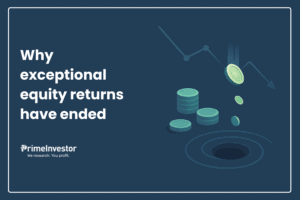When stock markets correct, it can be tough to decide what to buy. Passive index funds and Exchange Traded Funds (ETFs) solve the problem by allowing you to “buy the market.”

Kotak Mutual Fund has recently launched an ETF proxying the MSCI India Index, while HDFC Mutual Fund also has the same offering lined up. Indian investors will thus have the option of buying the MSCI India Index, an index widely used by foreign investors to take passive India exposures.
But is the MSCI India Index a better option for us than the Nifty50, Nifty100 or Nifty LargeMidcap 250, on which index funds are widely available? Our analysis suggests that it isn’t, today. Here’s why.
Same screening criteria
To select stocks for inclusion, MSCI ranks all stocks by market cap. The top 70% are then treated as large-cap, the next 15% as mid-cap and the final 15% as small-cap. The MSCI India Index picks stocks only from large and mid-cap baskets. It then screens for free-float and liquidity, and assigns index weights based free-float market capitalization.
This screening methodology is almost the same as that used by Indian indices. The only difference is that these indices numerically restrict the number of stocks they own to the top 50,100 or 250. The MSCI India index currently features 156 stocks.
With similar filtering criteria, there is not much difference between the top stock choices of the MSCI India Index against other indices, as you can see below. All data presented in this article is as of January 31 2025.
However, while their stock choices are not very different, the MSCI India Index is a less concentrated index than the Nifty50 or Nifty100. Its top 10 holdings make up just 38% of its portfolio, while the number is at 56.4% for Nifty50 and 46.8% for Nifty100.
This would normally be a good thing, but there is a caveat that we explain below. Nifty LargeMidcap250 is more diversified than the MSCI India Index with just a 23.8% weight in its top ten holdings.
Lower BFSI weight
Traditionally, one of the main negatives of investing in Nifty50 or Nifty100 tracking funds was their high exposure to their top sector – BFSI. The table below shows that by investing the Nifty50 or Nifty100, you’d be concentrating over a third of your portfolio in just this one sector. The MSCI India Index has a more moderate weight in BFSI at 27.4%.
The Nifty LargeMidcap 250 index however scores over the MSCI India Index, both in terms of featuring lower concentration to BFSI stocks and lower weights in highly cyclical sectors such as energy, metals and mining.
More diversified sector weights would normally be a good thing. But in terms of current timing, lower weights to BFSI stocks can work against the MSCI India and Nifty LargeMidcap 250.
BFSI are leveraged bets on the economy. Their topline and earnings tend to grow at a multiple of GDP growth in boom times, and slow down more sharply in downcycles. In the last two years, banking and financial stocks have performed worse than the economy due to regulatory tightening. This is however set to reverse with recent relaxations and a credit growth pickup. BFSI also presents an island of low valuation in an otherwise expensive market. This suggests that indices with higher BFSI weight such as the Nifty50 and Nifty100 could be better performers in the near future.
Higher valuation
If you view index funds just as a portfolio of stocks, the valuation of this portfolio can help you decide whether it is the right time to buy into it. On this score, MSCI India Index trades at a more expensive valuation than the Nifty50 and Nifty100. This could be the direct result of lower weights in BFSI, which trades at moderate valuations compared to other sectors at present. The Nifty LargeMidcap 250 however is more expensive than the MSCI India Index.
Scoring low on rolling returns
The most important test to decide whether to own any fund, including an index fund, is how it fares on returns over the long run. This is where the MSCI India falters.
We ran a rolling return analysis of the MSCI India Index (in Rupees) against the Nifty50, Nifty100 and Nifty LargeMidcap 250 price indices based on near 20-year data from end-2005 to February 2025. We calculated returns for rolling 1-year, 5-year and 10-year holding periods.
Here is a summary of the results.
Here’s what the results tell us.
- One a rolling one-year basis, the MSCI India Index has delivered lower average returns compared to all three Nifty indices. In its best year, it delivered 97.7% - better than the Nifty50 or Nifty100; this is explained by its mid-cap exposure. But then, the Nifty LargeMidcap 250 did much better than the MSCI India in such phases managing 112%.
- While rolling 1-year returns can help capture the journey of an investor, it is 5-year and 10-year returns that really matter for final outcomes. Here the MSCI India Index doesn’t compare well to Nifty50, Nifty100 or Nifty LargeMidcap 250 on every count. Its average rolling returns are much lower than the other three indices. Its minimum returns are lower, and its maximum returns aren’t much better. The number of loss-making 5 and 10-year periods for the MSCI India Index was higher than those for the other three.
- Most important though, the probability of getting to a 12% plus return with the MSCI India Index was just 25.7 % over 5-year periods and 13% over 10-year periods. Both the Nifty100 and Nifty LargeMidcap 250 had twice as many periods with 12% plus returns.
One factor that could explain MSCI India Index’s inferior performance could be that it represents the basket of stocks that are dominated by FPIs. We know that FPIs have been consistently in sell mode and reducing their India weights, in recent times. The FPI holding in Indian listed stocks is currently at a 13-year low of about 17%.
This barrage of selling is bound to have dragged down the performance of MSCI India index relative to the Nifty indices. Going forward, if FPIs were to return to India in large numbers, the MSCI India Index could begin to outperform. This is a big *if* and the catch-up will take time. It also doesn’t explain away the MSCI India’s historical poor performance.
Final takeaway
The results clearly show that if you are happy with a large-cap exposure to the market, the Nifty 50 or the Nifty100 index funds should be your choice.
If a mid-cap flavour that can give you higher returns (with higher risks of course) is your preference, then the Nifty LargeMidcap 250 works out better than the MSCI India Index. It has demonstrated twice the probability of getting you to a 12% return and does much better in the bull phases. It has also delivered losses on fewer occasions.
All three indices are a part of Prime Funds, listed under Passive in the Equity fund recommendations. Both Kotak and HDFC are offering ETFs to buy the MSCI India Index. However, in ETFs, trading volumes are an important factor in tracking error and in terms of ability to invest. In the Indian context, though, barring a few, several ETFs tracking broad markets have low trading volumes (you can check our Prime ETF Rating for ETF trading volumes). This apart, broad-market ETFs in general tend to have higher tracking error. In new ETFs, both volumes and tracking error are unknown. This is another reason to wait and watch the newly minted MSCI India ETFs before jumping in.





3 thoughts on “ETF Review: MSCI India ETFs – Should you buy this FPI favourite?”
hello everyone at primeinvestor.
Thank you for your efforts,
Are there any mutual funds still accepting investments in china, asian and US markets ? can you please let us know all such funds ?
We will be covering a couple of international funds the coming week.
Good analysis !
Comments are closed.